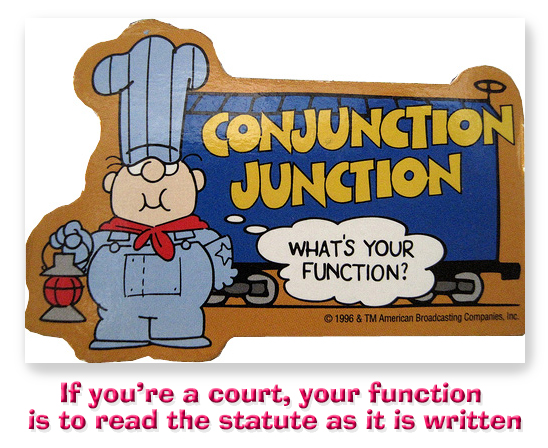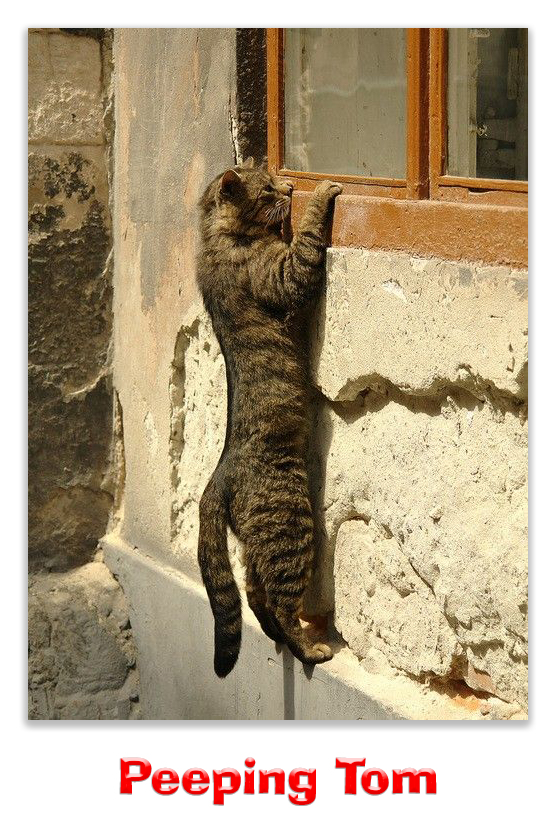We post news and comment on federal criminal justice issues, focused primarily on trial and post-conviction matters, legislative initiatives, and sentencing issues.

GOOD NEWS FROM CONJUNCTION JUNCTION
 The “safety valve” in 18 USC § 3553(f) allows a district court to sentence a drug defendant below an otherwise mandatory-minimum sentence if he or she meets certain criteria – such as the offense having no gun or violence, the defendant not being a leader in the offense, and the defendant truthfully admitting his or her role in the offense. But the first criterion has always been the tough one, that the defendant’s criminal history score could be no higher than one, a requirement that disqualified everyone but the most virginal of miscreants.
The “safety valve” in 18 USC § 3553(f) allows a district court to sentence a drug defendant below an otherwise mandatory-minimum sentence if he or she meets certain criteria – such as the offense having no gun or violence, the defendant not being a leader in the offense, and the defendant truthfully admitting his or her role in the offense. But the first criterion has always been the tough one, that the defendant’s criminal history score could be no higher than one, a requirement that disqualified everyone but the most virginal of miscreants.
Congress changed all of that in the First Step Act. In expanding the number of people covered by the safety valve, Congress wrote that a defendant now must only show that he or she “does not have… (A) more than 4 criminal history points… (B) a prior 3-point offense… and (C) a prior 2-point violent offense.”
The “safety valve” was one of the only sensible things to come out of the Violent Crime Control and Law Enforcement Act of 1994, the bill championed by then-Senator Joe Biden that, a quarter-century later, has been used to brand him a mass-incarcerating racist. The safety valve was intended to let people convicted of drug offenses as first-timers avoid the crushing mandatory minimum sentences that Congress had imposed on just about all drug dealing.
Eric Lopez got caught smuggling meth across the border. Everyone agreed he qualified for the safety valve except for his criminal history. Eric had one prior 3-point offense, and the government argued that was enough to disqualify him. Eric argued that the First Step Act amendment to the “safety valve” meant he had to have all three predicates: more than 4 points, one 3-point prior, and one 2-point prior violent offense.
 Remember the fun that the media had when Bill Clinton famously dodged a deposition question by saying, “It depends on what the meaning of ‘is’ is?” That’s not so funny in the world of statutory construction. In Eric’s case, the government was contending that the First Step amendment meant that if a defendant had any one of the listed conditions – more than 4 points total, at least one 3-point prior, or at least one 2-point prior violent offense – he or she could not get the safety valve. In other words, the government was arguing that “and” means “or.” The district court, however, agreed with Eric that the conjunction “and” means “and.”
Remember the fun that the media had when Bill Clinton famously dodged a deposition question by saying, “It depends on what the meaning of ‘is’ is?” That’s not so funny in the world of statutory construction. In Eric’s case, the government was contending that the First Step amendment meant that if a defendant had any one of the listed conditions – more than 4 points total, at least one 3-point prior, or at least one 2-point prior violent offense – he or she could not get the safety valve. In other words, the government was arguing that “and” means “or.” The district court, however, agreed with Eric that the conjunction “and” means “and.”
Last week, the 9th Circuit agreed. In a decision that dramatically expands the reach of the safety valve, the Circuit applied the rules of statutory construction and held that the First Step amendment was unambiguous. “Put another way, we hold that ‘and’ means ‘and.’”
The government argued that such an interpretation could lead to crazy results (by which it meant “pro-defendant” results, no doubt). The 9th was unswayed:
“We recognize that § 3553(f)(1)’s plain and unambiguous language might be viewed as a considerable departure from the prior version of § 3553(f)(1), which barred any defendant from safety-valve relief if he or she had more than one criminal-history point under the Sentencing Guidelines… As a result, § 3553(f)(1)’s plain and unambiguous language could possibly result in more defendants receiving safety-valve relief than some in Congress anticipated… But sometimes Congress uses words that reach further than some members of Congress may have expected… We cannot ignore Congress’s plain and unambiguous language just because a statute might reach further than some in Congress expected… Section 3553(f)(1)’s plain and unambiguous language, the Senate’s own legislative drafting manual, § 3553(f)(1)’s structure as a conjunctive negative proof, and the canon of consistent usage result in only one plausible reading of § 3553(f)(1)’s “and” here: “And” is conjunctive. If Congress meant § 3553(f)(1)’s “and” to mean “or,” it has the authority to amend the statute accordingly. We do not.”
 It’s pretty clear that this is an example of bad draftsmanship, an amendment that gives defendants much more than the Senate intended. But that’s irrelevant. For very good reason, when the text of a statute says something plainly, courts will not check it against the legislative history to determine whether what it says is consistent with legislative intent. It may seem to some that statutory interpretation debate has an “angels on the head of a pin” quality to it, but reading statutes to mean what they say rather than what the courts wish they said or what the legislators might have said had they been more careful is vital to avoiding judicial mischief.
It’s pretty clear that this is an example of bad draftsmanship, an amendment that gives defendants much more than the Senate intended. But that’s irrelevant. For very good reason, when the text of a statute says something plainly, courts will not check it against the legislative history to determine whether what it says is consistent with legislative intent. It may seem to some that statutory interpretation debate has an “angels on the head of a pin” quality to it, but reading statutes to mean what they say rather than what the courts wish they said or what the legislators might have said had they been more careful is vital to avoiding judicial mischief.
This decision could be huge for a lot of people sentenced to drug offenses after the effective date of the First Step Act in December 2018.
United States v. Lopez, Case No. 19-50305, 2021 U.S. App. LEXIS 15184 (9th Cir. May 21, 2021)
Sentencing Law & Policy, Ninth Circuit panel interprets FIRST STEP amendment to statutory safety valve to greatly expand who can avoid federal mandatory-minimum sentences (May 22)
– Thomas L. Root






